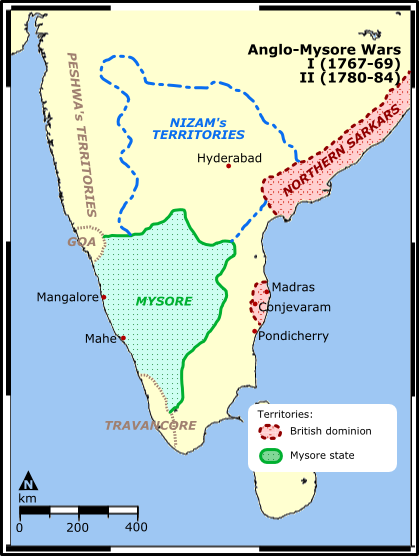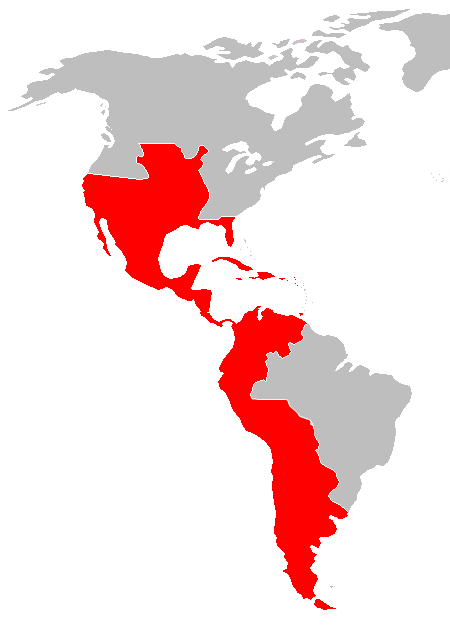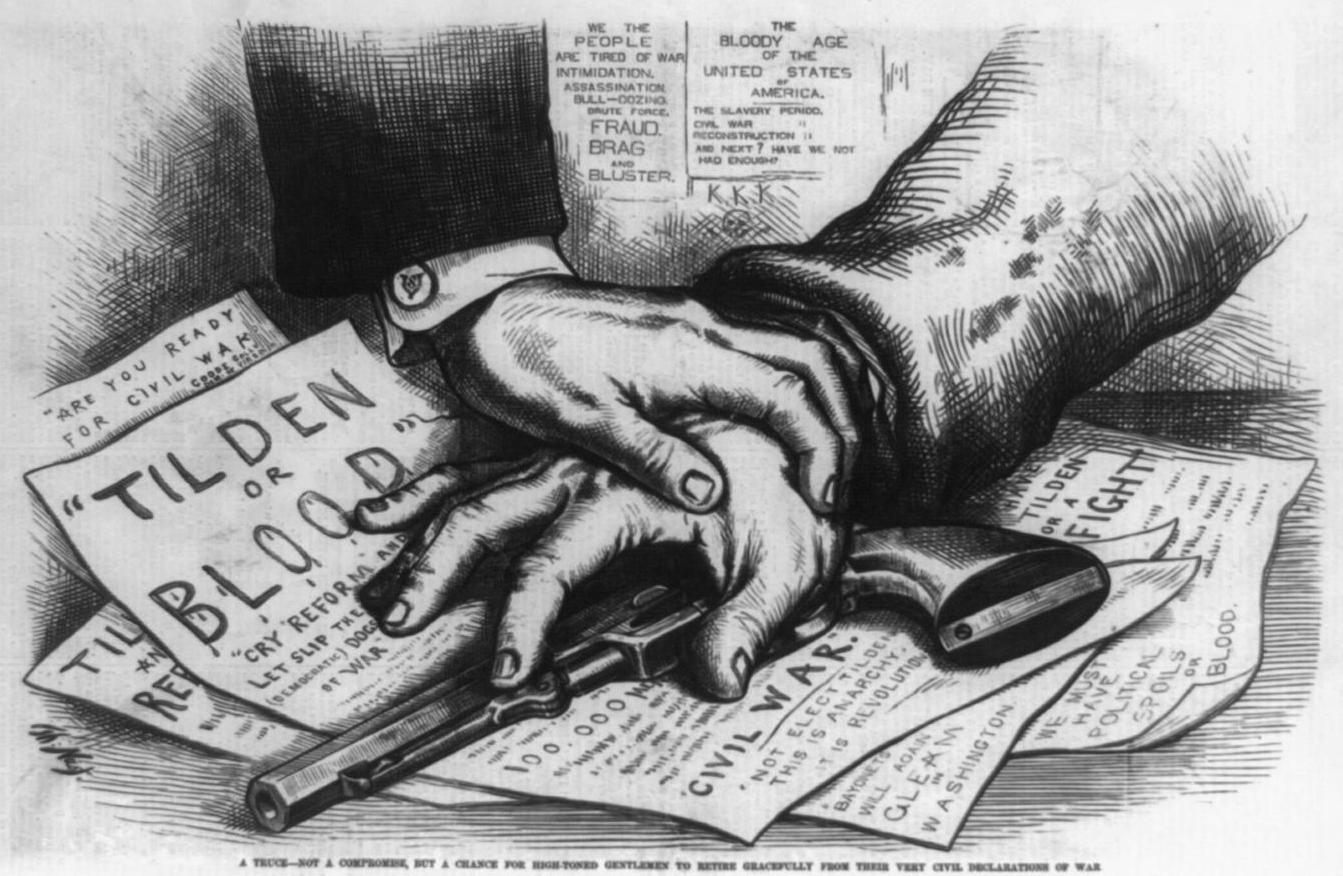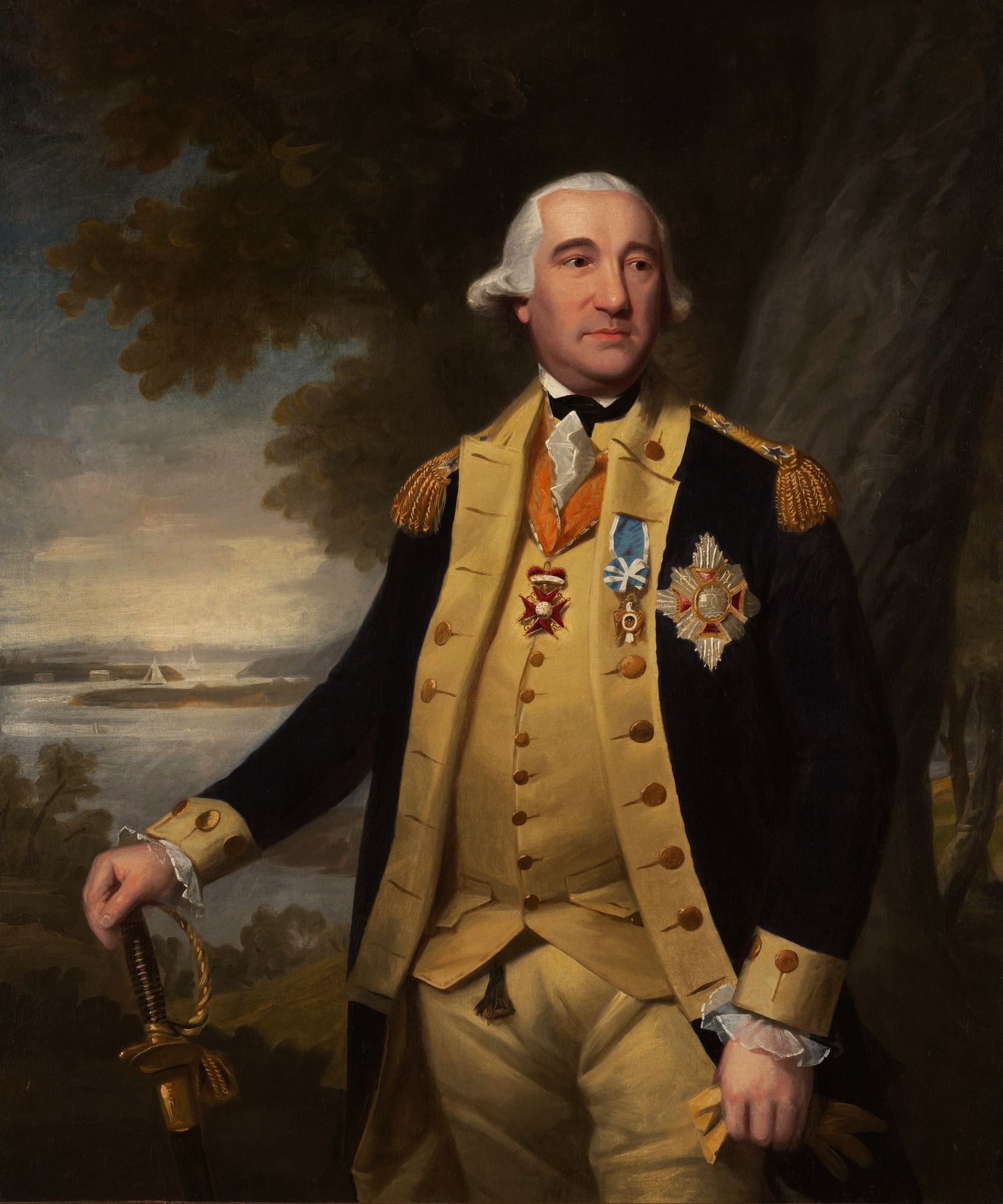|
Siege Of Cuddalore
The siege of Cuddalore was a siege attempt by British troops against a combined French and Mysorean garrison at the fortress of Cuddalore in the Second Anglo-Mysore War. The siege ended when news arrived of a preliminary peace treaty between France and Britain. Siege British troops were under the command of Major-General James Stuart and arrived outside Cuddalore on 7 June 1783. This army consisted of the 73rd and 78th Highlanders, the 101st regiment, and a considerable body of Sepoys. It was subsequently reinforced by a detachment of two Hanoverian regiments from the King's German possessions, commanded by Colonel Christoph August von Wangenheim. On 6 June, the army took up a position on the sandy ground two miles from the garrison. They were between the sea on the right and the Bandipollum hills on the left, with a reserve line in the rear. The French and Mysoreans, commanded by Marquis de Bussy-Castelnau, took an intermediate and parallel position half a mile (0.8 ... [...More Info...] [...Related Items...] OR: [Wikipedia] [Google] [Baidu] |
Second Anglo-Mysore War
The Second Anglo-Mysore War was a conflict between the Kingdom of Mysore and the British East India Company from 1780 to 1784. At the time, Mysore was a key French ally in India, and the conflict between Britain against the French and Dutch in the American Revolutionary War sparked Anglo-Mysorean hostilities in India. The great majority of soldiers on the company side were raised, trained, paid and commanded by the company, not the British government. However, the company's operations were also bolstered by Crown troops sent from Britain, and by troops from Hanover, which was also ruled by Britain's King George III. Following the British seizure of the French port of Mahé in 1779, Mysorean ruler Hyder Ali opened hostilities against the British in 1780, with significant success in early campaigns. As the war progressed, the British recovered some territorial losses. Both France and Britain sent troops and naval squadrons from Europe to assist in the war effort, which widened la ... [...More Info...] [...Related Items...] OR: [Wikipedia] [Google] [Baidu] |
Garrison
A garrison (from the French ''garnison'', itself from the verb ''garnir'', "to equip") is any body of troops stationed in a particular location, originally to guard it. The term now often applies to certain facilities that constitute a military base or fortified military headquarters. A garrison is usually in a city, town, fort, castle, ship, or similar site. "Garrison town" is a common expression for any town that has a military base nearby. "Garrison towns" ( ar, أمصار, amsar) were used during the Arab Islamic conquests of Middle Eastern lands by Arab-Muslim armies to increase their dominance over indigenous populations. In order to occupy non-Arab, non-Islamic areas, nomadic Arab tribesmen were taken from the desert by the ruling Arab elite, conscripted into Islamic armies, and settled into garrison towns as well as given a share in the spoils of war. The primary utility of the Arab-Islamic garrisons was to control the indigenous non-Arab peoples of these conque ... [...More Info...] [...Related Items...] OR: [Wikipedia] [Google] [Baidu] |
Peace Of Paris (1783)
The Peace of Paris of 1783 was the set of treaties that ended the American Revolutionary War. On 3 September 1783, representatives of King George III of Great Britain signed a treaty in Paris with representatives of the United States of America—commonly known as the Treaty of Paris (1783)—and two treaties at Versailles with representatives of King Louis XVI of France and King Charles III of Spain—commonly known as the Treaties of Versailles (1783). The previous day, a preliminary treaty had been signed with representatives of the States General of the Dutch Republic, but the final treaty which ended the Fourth Anglo-Dutch War was not signed until 20 May 1784; for convenience, however, it is included in the summaries below. The treaty dictated that the British would lose their Thirteen Colonies and marked the end of the First British Empire. The United States gained more than it expected, thanks to the award of western territory. The other Allies had mixed to poor results. ... [...More Info...] [...Related Items...] OR: [Wikipedia] [Google] [Baidu] |
King Of Sweden
The monarchy of Sweden is the monarchical head of state of Sweden,See the Instrument of Government, Chapter 1, Article 5. which is a constitutional and hereditary monarchy with a parliamentary system.Parliamentary system: see the Instrument of Government, Chapter 1, Article 1. There have been kings in what now is the Kingdom of Sweden for more than a millennium. Originally an elective monarchy, it became a hereditary monarchy in the 16th century during the reign of Gustav Vasa, though virtually all monarchs before that belonged to a limited and small number of families which are considered to be the royal dynasties of Sweden. Sweden in the present day is a representative democracy in a parliamentary system based on popular sovereignty, as defined in the current Instrument of Government (one of the four Fundamental Laws of the Realm which makes up the written constitution). The monarch and the members of the royal family undertake a variety of official, unofficial and other re ... [...More Info...] [...Related Items...] OR: [Wikipedia] [Google] [Baidu] |
Marshal Of France
Marshal of France (french: Maréchal de France, plural ') is a French military distinction, rather than a military rank, that is awarded to generals for exceptional achievements. The title has been awarded since 1185, though briefly abolished (1793–1804) and for a period dormant (1870–1916). It was one of the Great Officers of the Crown of France during the and Bourbon Restoration, and one of the Grand Dignitaries of the Empire during the First French Empire (when the title was Marshal of the Empire, not Marshal of France). A Marshal of France displays seven stars on each shoulder strap. A marshal also receives a baton: a blue cylinder with stars, formerly fleurs-de-lis during the monarchy and eagles during the First French Empire. The baton bears the Latin inscription of ', which means "terror in war, ornament in peace". Between the end of the 16th century and the middle of the 19th century, six Marshals of France were given the even more exalted rank of Marshal General ... [...More Info...] [...Related Items...] OR: [Wikipedia] [Google] [Baidu] |
Charles XIV John Of Sweden
sv, Karl Johan Baptist Julius , spouse = , issue = Oscar I of Sweden , house = Bernadotte , father = Henri Bernadotte , mother = Jeanne de Saint-Jean , birth_date = , birth_place = Pau, France , death_date = , death_place = Stockholm, Sweden , date of burial = 26 April 1844 , place of burial = Riddarholm Church , religion = Lutheran''prev.'' Roman Catholic , signature = Autograf, Carl Johan, Nordisk familjebok.svg , module = Charles XIV John ( sv, Karl XIV Johan; born Jean Bernadotte; 26 January 1763 – 8 March 1844) was King of Sweden and Norway from 1818 until his death in 1844. Before his reign he was a Marshal of France during the Napoleonic Wars and participated in several battles. In modern Norwegian lists of kings he is called Charles III John ( no, Karl III Johan). He was the first monarch of the Bernadotte dynasty. Born in Pau in southern France, Bernadotte joined the Frenc ... [...More Info...] [...Related Items...] OR: [Wikipedia] [Google] [Baidu] |
Sortie
A sortie (from the French word meaning ''exit'' or from Latin root ''surgere'' meaning to "rise up") is a deployment or dispatch of one military unit, be it an aircraft, ship, or troops, from a strongpoint. The term originated in siege warfare. In aviation In military aviation, a sortie is a combat mission of an individual aircraft, starting when the aircraft takes off. For example, one mission involving six aircraft would tally six sorties. The sortie rate is the number of sorties that a given unit can support in a given time. In siege warfare In siege warfare, the word ''sortie'' refers specifically to a sudden issuing of troops against the enemy from a defensive position—that is, an attack launched against the besiegers by the defenders. If the sortie is through a sally port, the verb ''to sally'' may be used interchangeably with ''to sortie''. Purposes of sorties include harassment of enemy troops, destruction of siege weaponry and engineering works, joining the relief ... [...More Info...] [...Related Items...] OR: [Wikipedia] [Google] [Baidu] |
Madras
Chennai (, ), formerly known as Madras ( the official name until 1996), is the capital city of Tamil Nadu, the southernmost Indian state. The largest city of the state in area and population, Chennai is located on the Coromandel Coast of the Bay of Bengal. According to the 2011 Indian census, Chennai is the sixth-most populous city in the country and forms the fourth-most populous urban agglomeration. The Greater Chennai Corporation is the civic body responsible for the city; it is the oldest city corporation of India, established in 1688—the second oldest in the world after London. The city of Chennai is coterminous with Chennai district, which together with the adjoining suburbs constitutes the Chennai Metropolitan Area, the List of urban areas by population, 36th-largest urban area in the world by population and one of the largest metropolitan economies of India. The traditional and de facto gateway of South India, Chennai is among the most-visited Indian cities by f ... [...More Info...] [...Related Items...] OR: [Wikipedia] [Google] [Baidu] |
Battle Of Cuddalore (1783)
The Battle of Cuddalore was a naval battle between a British fleet, under Admiral Sir Edward Hughes with Admiral L.J. Weiland, and a smaller French fleet, under the Bailli de Suffren, off the coast of India during the American Revolutionary War. This war sparked the Second Mysore War in India. In the battle, taking place near Cuddalore on 20 June 1783, Suffren commanded the engagement from the frigate '' Cléopâtre'' and won what is generally considered a victory.Palmer p.161 Peace had already been agreed upon in Europe, but that news had yet to reach India, making this the final battle of the war. On the death of French ally Hyder Ali, the British decided to retake Cuddalore. They marched troops from Madras, and began preparing for a siege. The French fleet, under Suffren, appeared at Cuddalore on 13 June. A week of fickle winds prevented either side from engaging until 20 June, when Suffren attacked. No ships were seriously damaged, but each side lost about 100 men with a ... [...More Info...] [...Related Items...] OR: [Wikipedia] [Google] [Baidu] |
Ceasefire
A ceasefire (also known as a truce or armistice), also spelled cease fire (the antonym of 'open fire'), is a temporary stoppage of a war in which each side agrees with the other to suspend aggressive actions. Ceasefires may be between state actors or involve non-state actors. Ceasefires may be declared as part of a formal treaty, but also as part of an informal understanding between opposing forces. They may occur via mediation or otherwise as part of a peace process or be imposed by United Nations Security Council resolutions via Chapter VII of the United Nations Charter. The immediate goal of a ceasefire is to stop violence, but the underlying purposes of ceasefires vary. Ceasefires may be intended to meet short-term limited needs (such as providing humanitarian aid), manage a conflict to make it less devastating, or advance efforts to peacefully resolve a dispute. An actor may not always intend for a ceasefire to advance the peaceful resolution of a conflict, but instead gi ... [...More Info...] [...Related Items...] OR: [Wikipedia] [Google] [Baidu] |
Military Reserve
A military reserve, active reserve, reserve formation, or simply reserve, is a group of military personnel or units that is initially not committed to a battle by its commander, so that it remains available to address unforeseen situations or exploit sudden opportunities. Such a force may be held back to defend against attack from other enemy forces, to be committed to the existing battle if the enemy exposes a vulnerability, or to serve as relief for troops already fighting. Some of the different categories of military reserves are: tactical reserve, operational reserve, and strategic reserve. A military reserve is different from a military reserve force, which is a military organization composed of military personnel who maintain their military skills and readiness in a long-term part-time commitment to support their country if needed. Military reserve refers to specific trained pre-organized forces operating on an on-call basis from the main military force. Each member acts in ... [...More Info...] [...Related Items...] OR: [Wikipedia] [Google] [Baidu] |
Germans In The American Revolution
Ethnic Germans served on both sides of the American Revolutionary War. Large numbers of Germans had emigrated to Pennsylvania, New York and other American colonies, and they were generally neutral or supported the Patriot cause. Some belonged to pacifist sects such as the Amish, but many were drawn into the Revolution and the war. Allies of Great Britain Germans in Europe lived in numerous separate states. Some of these states had been in alliance with Britain during the Seven Years' War, and were eager to assist Great Britain. Britain had used auxiliary forces in every one of its 18th century wars, their use in suppressing rebellion seemed consistent with previous policy. Their use against British subjects was controversial, however. Despite British Whig opposition to using German soldiers to subjugate the "sons of Englishmen," Parliament overwhelmingly approved the measure in order to quickly raise the forces need to suppress the rebellion. The leasing of soldiers ... [...More Info...] [...Related Items...] OR: [Wikipedia] [Google] [Baidu] |








